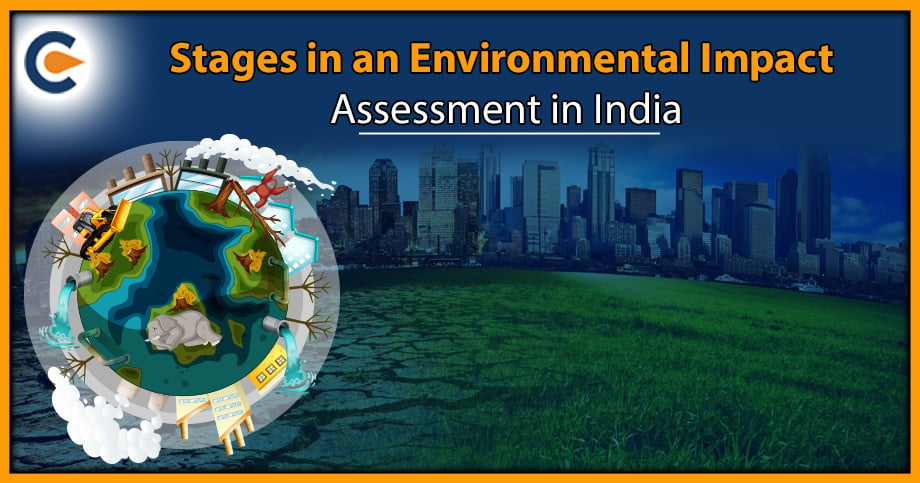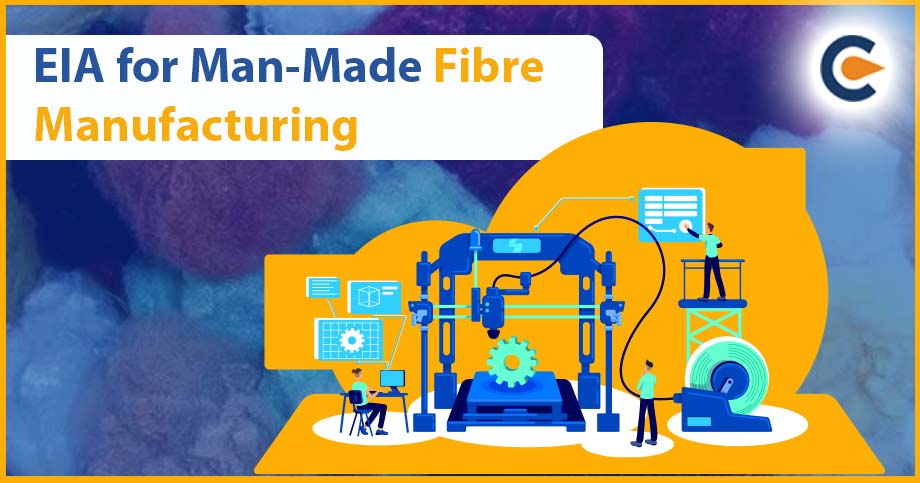Humankind, as it is developed today, can only live with taking up development activities for securing the supply of food, security and other needs. However, these activities though beneficial for humanity, may have adverse impacts on the environment, so there is always a need to adjust developmental activities along with the concerns of the environment. Environmental impact assessment (EIA) has been introduced by many countries, including India, as an environment protection-specific legislation. Under the Environment (P) Act 1986[1], the Government issued several notifications related to the conservation of the environment, one of which was the EIA Notification of 2006, which made EIA mandatory for specific projects to obtain Environment Clearance (EC). EIA tries to identify the impacts (both adverse and beneficial) of any proposed private and public development projects. In this write-up, we will understand the stages a project must go through before it can get clearance for the project by the MoEF&CC. First, let’s look at the category of projects that will need an Environment Impact Assessment.
Category A projects are projects whose size and cost are greater than certain levels as defined in the Schedule. Environmental clearance for projects of this nature is issued at the central level. Physical infrastructure like ports, highways, urban transport, water and sanitation, solid waste management sectors, etc., mandatorily require EC and do not undergo the screening process.
Category B projects are those with smaller capacity or size and that will have a lesser impact than projects in category A. Environment clearance for B Category projects is issued at the State government level. Each State has dedicated Boards which would give clearance to the project. These projects will require a screening process at the next stage. After the screening, if the authority thinks that the project will have no significant effect on the environment, it may be exempted from the requirement of EIA and get classified as a B2 category project. In other cases, the project will be categorised as B1 and will require an Environmental Impact Assessment
- Category B1 projects (Mandatorily requires EIA).
- Category B2 projects (Do not require EIA).
What Should Be Your Approach While Going For an EIA
On must ensure that the development projects under consideration are designed to be sustainable. While doing so, consequences and effects on the environment must be characterised in the early stages of the proposal of the project, and mitigation measures must be inculcated in the project design.
EIA tries to foresee the potential environmental problems that could arise from a proposed activity and address them in the planning and design stages of the project. The Environmental Impact Assessment process should then allow for the communication of this information to all the parties, i.e.
- Project proponent
- Regulatory agencies; and
- Stakeholders and interest groups
Stages in EIA
Environmental Impact Assessment has five main stages. If an EIA is required, an Environmental Assessment Impact Report has to be submitted with the application for consent. The public will have the chance to comment. To make sure they are given an opportunity to be involved in decision-making.
| Stage of EIA | Why Needed | Detailed |
| Screening Stage | To Decide if an EIA is required | Applies to Category B projects. The SEAC or the State-level Expert Appraisal Committee will review the application to determine if the project will need further environmental studies for the preparation of the report. |
| Scoping Stage | For Terms of Reference (TOR) | Performed by the consultant as per the requirements of project proponent and environment-related obligations. |
| Public Consultation Stage (for Category A and B1 ) | needed to address issues of the local community | This stage involves consultation with project-affected persons on the effects of the project. |
| Appraisal Stage | an inspection to find out the merits/demerits of the Regulatory Authority | The detailed scrutiny of the final EIA report will be presented to the SEAC or the EAC. They will consider the environmental aspects of the project and then make recommendations to the Regulatory Authority on whether EC should be granted or not. |
Generalised EIA Process
An application seeking an EC must be made in the prescribed Form 1 of the Environmental Impact Assessment Notification before commencing the project to the MoEF&CC. The applicant must submit a pre-feasibility report with the application. In addition to the EC, permits like Consent NOC under the Air and Water Act for the projects must be obtained from the concerned State Governments where the project is located. This can be pursued in a parallel process and will usually take lesser time than the EC process. The following details must be made ready while going for the Environmental Impact Assessment.
Data and Reports
- Basic project information such as the name, location etc.)
- Details of activity linked to the project:
- Actions causing physical transformations
- The project’s use of natural resources
- Associated substances or materials that could be hazardous or harmful
- Production of solid wastes
- Release of contaminants into the air, ground and waterways
- Generation of vibration and noise and emissions of light and heat
- Risk of accidents
- Factors that could cause cumulative impacts or consequential effects
- Details of environmentally sensitive areas within a certain distance of the project site
- Proposed TOR for the EIA study
Documents
- Final Environmental Impact Assessment Report
- A copy of the videotape or CD of the public hearing proceedings (where public consultations are mandatory – see process requirements below)
- A copy of the final layout plan
- A copy of the project feasibility report
The project proponent will need to prepare the Detailed Project Report to the Feasibility Report and submits an executive summary, incorporating the project details, findings of the study etc., and make it public to the concerned population. The proponent must approach the concerned SPCB for NOC and hold the public hearing. After the public hearing, the proponent submits its application to IAA for environmental clearance.
Conclusion
The entities preparing the Environmental Impact Assessment Report must be conversant with the existing legal and procedural requirements for obtaining environmental clearance for the project. The consultant must be able to guide the project proponent through the initial screening of the project and establish whether EIA studies are required and, if so, finalise the scope of that study. They must also be equipped with instruments and infrastructure for conducting different Environmental Impact Assessment studies such as SIA, Hydrogeological Surveys, site impact assessment etc. Therefore environmental consultants that can provide you with all-inclusive assistance and justify the findings in the Environmental Impact Assessment and EMP during the meeting with the expert groups at IAA will be required.
Read Our Article: Types Of Environmental Impact Assessment











